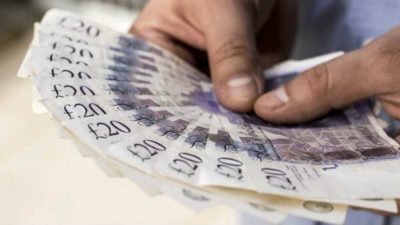The J Sainsbury (LSE: SBRY) share price has fallen by 25% over the last year, leaving it well behind listed rivals Tesco and Morrisons.
One reason for this is the failed attempt to merge with Asda, which caused the shares to slide. Figures published today reveal that there was probably only one winner from this unsuccessful deal — the supermarket’s army of bankers and advisers, who collected fees of £46m for their work.
However, it’s now time for the company and its shareholders to move on. Happily, Sainsbury’s has published a fairly upbeat set of full-year results today, revealing stable trading and a 7.8% rise in underlying profits. Loyal shareholders have also been rewarded with a 7.8% dividend increase.
The shares are up by nearly 4% at the time of writing. Is it time to start buying?
What’s missing from these numbers?
Sainsbury’s underlying pre-tax profit rose by 7.8% to £635m last year. But a total of £396m of adjustments meant that the supermarket’s reported pre-tax profit fell by 42% to £239m.
Most companies provide these two versions of profits in their accounts. Adjusted profits can exclude some items, while reported profits must include all costs and gains in order to meet accounting standards.
Adjusted profits can be useful. They make it easier to see how a company’s underlying business is performing, excluding one-off changes. But I tend to get worried when I see such a large gap between adjusted and reported profits. Is the company masking a poor performance with heavy adjustments?
I’d take a more cautious view
I’m not suggesting anything is wrong with Sainsbury’s accounts, but I would prefer to see a more cautious view of underlying profitability.
Some expenses, such as the Asda deal fees and Argos integration are obviously one-offs and are now complete.
Others seem to repeat regularly. For example, the “transition” of Sainsbury’s Bank has been recorded as an exceptional cost of between £38m and £70m in each of the last four years. A similar expense is expected again in 2019/20. In my view, this should be seen as an ongoing cost.
I’d use this test instead
The acid test of a business is how much spare cash it generates. So rather than spending too much time analysing Sainsbury’s profits, I’ve taken a look at the firm’s cash generation.
My calculations suggest that the business generated free cash flow — surplus cash — of £547m last year, up from £454m in the previous year. This spare cash covered the dividend comfortably and allowed the company to reduce net debt by £222m as well.
Overall, I’m impressed by this strong cash performance.
Challenges ahead
Boss Mike Coupe still faces some big challenges. Staff and overheads costs rose by 22% to £1,733m last year, while the group’s operating profit margin fell from 1.8% to just 1.1%. That’s much lower than both Tesco (3.4%) and Morrison (2.1%).
My view: Sainsbury’s will need to continue investing in its stores and online operations to defend its market share. Net debt is still quite high in my view, and the group’s falling profit margins are a concern.
Although the 4.7% dividend yield is tempting, I’d prefer to invest my cash in Tesco or Morrisons. Both these rival firms are more profitable and growing faster.







